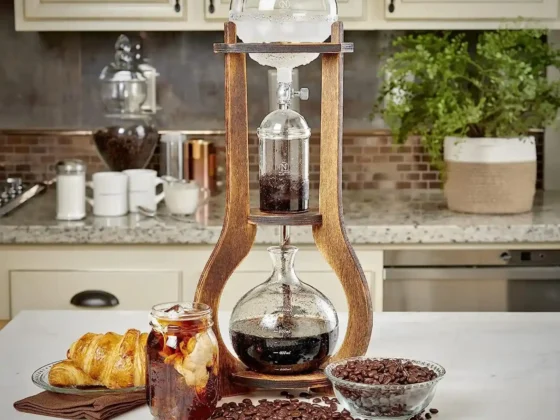In the world of caffeinated delights, the debate between espresso and coffee beans has been brewing for ages. These beans, both hailing from the Coffea plant, have embarked on distinct journeys of roasting, grinding, and preparation, leading to passionate discussions among these beverage enthusiasts worldwide. Whether you’re a casual drinker or a coffee connoisseur, understanding the intricacies of espresso beans vs coffee beans can deeply enrich your brewing experience. As we dive into this ultimate showdown, prepare to uncover the nuances and characteristics that set these beans apart and make each one special in its own right.
Not in the mood for reading? Tune in to the audio version of the article below.
- Introduction & Key Takeaway
- https://app.mysoundwise.com/tracks/16975873056032158e.mp3
- Understanding Coffee Beans
- https://app.mysoundwise.com/tracks/16975874487523342e.mp3
- Espresso Beans Demystified
- https://app.mysoundwise.com/tracks/16975874942643301e.mp3
- Espresso Beans vs Coffee Beans: Taste and Aroma
- https://app.mysoundwise.com/tracks/16975875733133650e.mp3
- Espresso Beans vs Coffee Beans: Brewing Methods
- https://app.mysoundwise.com/tracks/16975876123308293e.mp3
- Espresso vs Coffee: Which Is Right for You?
- https://app.mysoundwise.com/tracks/16975878620609333e.mp3
- Conclusion & FAQs
- https://app.mysoundwise.com/tracks/16975879258826306e.mp3
Coffee Beans vs Espresso Beans: Key Takeaway
- Origin and Nature: Both beans come from the same plant but differ in roasting, brewing, and preparation.
- Roasting Distinction: Espresso beans are darkly roasted for a strong flavor, while coffee beans have varying roast levels, each giving a unique taste and aroma.
- Brewing Techniques: Espresso uses high pressure for a quick, dense shot, while coffee has multiple brewing styles like drip and pour-over, each with its flavor nuances.
- Taste Experience: Espresso is intense and velvety with a notable crema, while coffee’s flavor varies with roast, origin, and brew
- Versatility and Use: Espresso beans suit espresso-based drinks like lattes, whereas coffee beans, due to their roast variety, cater to diverse beverage preferences.
Understanding Coffee Beans
To truly appreciate a cup of joe, one must delve into the fascinating world behind its primary ingredient: the coffee bean. A remarkable journey from plant to cup, these types of beans have a rich history, varied types, and unique flavors influenced by their origin. Let’s dive into the story of coffee beans.
What Are Coffee Beans?

Coffee beans, the seeds that lay the foundation for our cherished brews, have an intriguing anatomy and nomenclature.
- Coffee Cherry: Contrary to popular belief, the coffee bean isn’t a bean at all. It originates from the Coffea plant’s fruit, often termed the “coffee cherry” due to its reddish hue. (1)
- Stone Fruit: Like standard cherries, the coffee fruit is a type of stone fruit, which means it houses a seed inside.
- Peaberry: In most cases, a coffee cherry encapsulates two seeds with flat sides facing each other. However, occasionally, a singular seed is found, known as a “peaberry“. There’s a belief (though not scientifically proven) that peaberries offer a more intense flavor than their dual-seeded counterparts.
- Composition: Resembling seeds like Brazil nuts and grains like white rice, the core component of coffee beans is endosperm.
To sum it up, while the term “bean” might be a misnomer, the impact and significance of coffee beans in global culture are undeniable. They are the heart and soul of every cup.
The Origins of Coffee Beans
The journey of the best coffee beans can be traced back to specific regions that offer them a conducive environment to grow.
- Bean Belt: This is a unique stretch near the equator, spanning between the Tropics of Capricorn and Cancer. It’s in this belt that we find countries leading in this beverage production, including Brazil, Vietnam, and Colombia. (2)
- Geographical Impact: The birthplace of this type of bean plays a pivotal role in its taste profile. Factors like altitude, climate, and soil type can vastly influence the bean’s final flavor.
In a nutshell, just as wine gets its distinct notes from its vineyard’s location, coffee beans derive their signature tastes from their places of origin.
Varieties of Coffee Beans
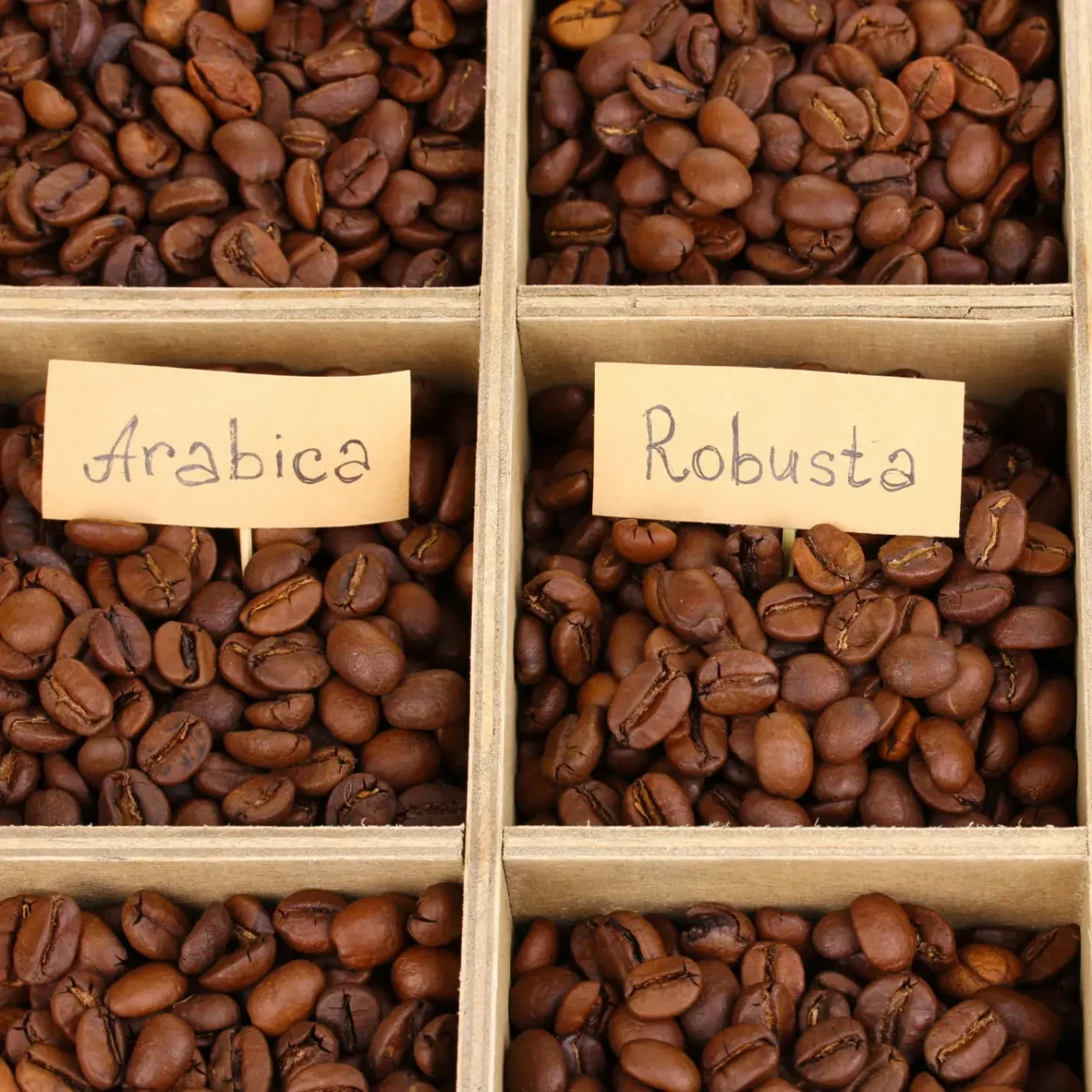
There’s a myriad of coffee beans, each with its unique characteristics and flavors.
- Arabica Coffee: This variety stands out as the most sought-after globally. Accounting for over 60% of the world’s coffee, Arabica beans are cherished for their superior quality and aromatic flavor. These beans prefer high altitudes and consistent rainfall.
- Robusta: Next in line is Robusta, known for its resilience. These beans are packed with twice the caffeine of Arabica, granting enthusiasts a stronger kick.
- Liberica: Liberica coffee beans, larger and irregularly shaped, are a rarity in this beverage world. With a smoky, fruity aroma, they present a distinct taste palette.
- Excelsa: Recently identified as a subtype of the Liberica family, Excelsa coffee beans are vastly different in taste from their cousins.
Drawing our exploration to a close, understanding the diverse varieties of coffee beans enhances our appreciation of the brew. From the mild aromatic Arabica coffee to the strong and resilient Robusta, there’s a bean for every palate.
Espresso Beans Demystified
Delving into the world of espresso beans, many find themselves surrounded by myths and misconceptions. This guide seeks to clarify the nature, roasting process, and popular varieties of espresso beans, ensuring you can identify the best coffee choices tailored to your tastes.
What Are Espresso Beans?
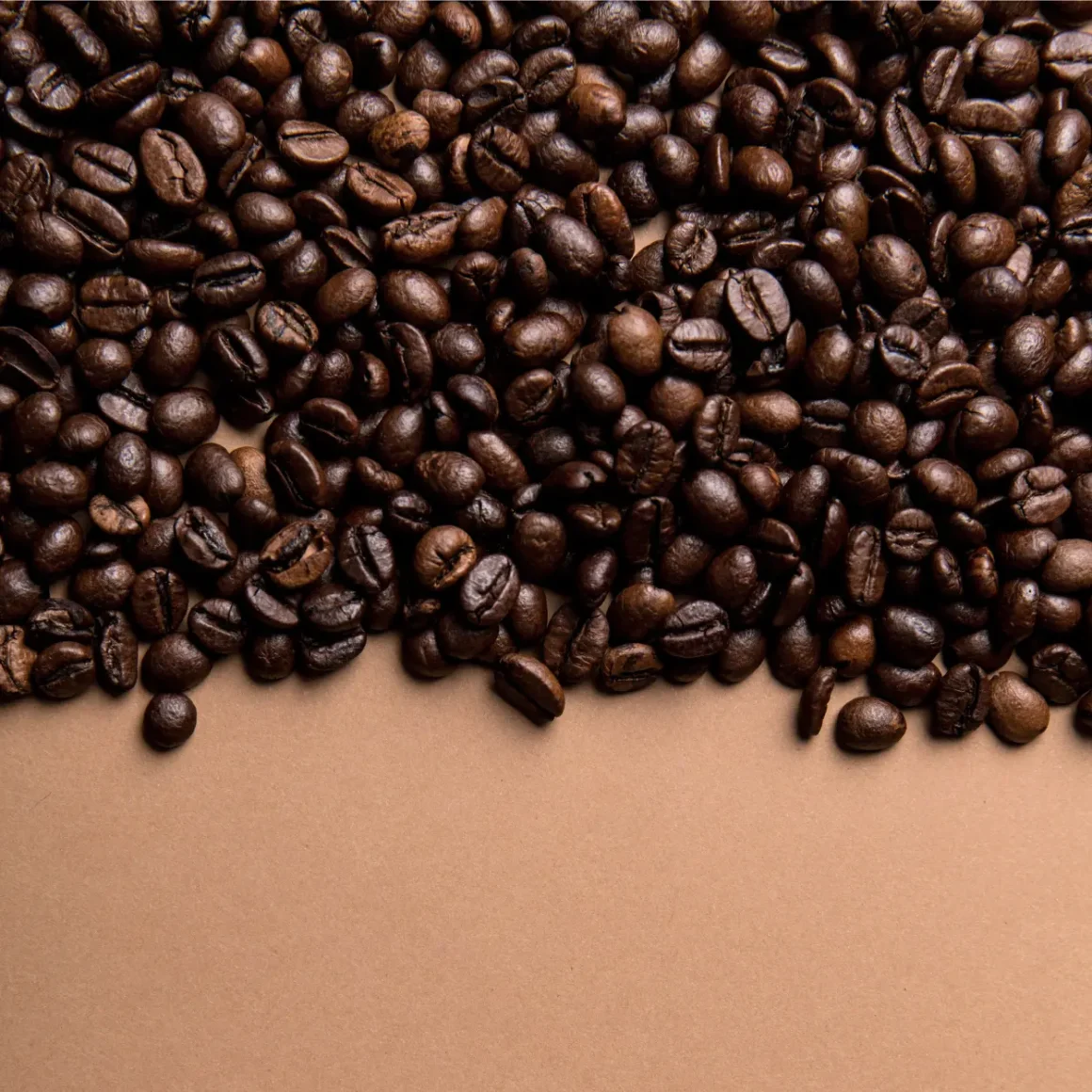
The realm of this delectable beverage is often shrouded in myths, leading many to believe that espresso beans are a unique breed or somehow superior to other beans. Let’s dispel these misconceptions:
- Nature of Espresso Beans: Despite popular beliefs, espresso beans are fundamentally dark roast beans. Their cultivation and processing are parallel to other beans.
- Role of Roasting: The distinguishing factor of espresso beans lies in their roasting technique. The term: espresso roast, highlights their dark-roasted character.
- Packaging Insights: When you spot the word espresso on a coffee package, it’s primarily the roaster’s way of guiding consumers on how best to utilize the beans, often rooted in the bean’s roast and grind specifications.
- Brewing Attributes: The unique roasting of espresso beans enhances their suitability for espresso machines, which emphasize a rich flavor extraction in a short span, giving that robust and lingering taste that many adore.
In essence, while all espresso beans are coffee beans, not all coffee beans make the best espresso.
Espresso Bean Roasting Process
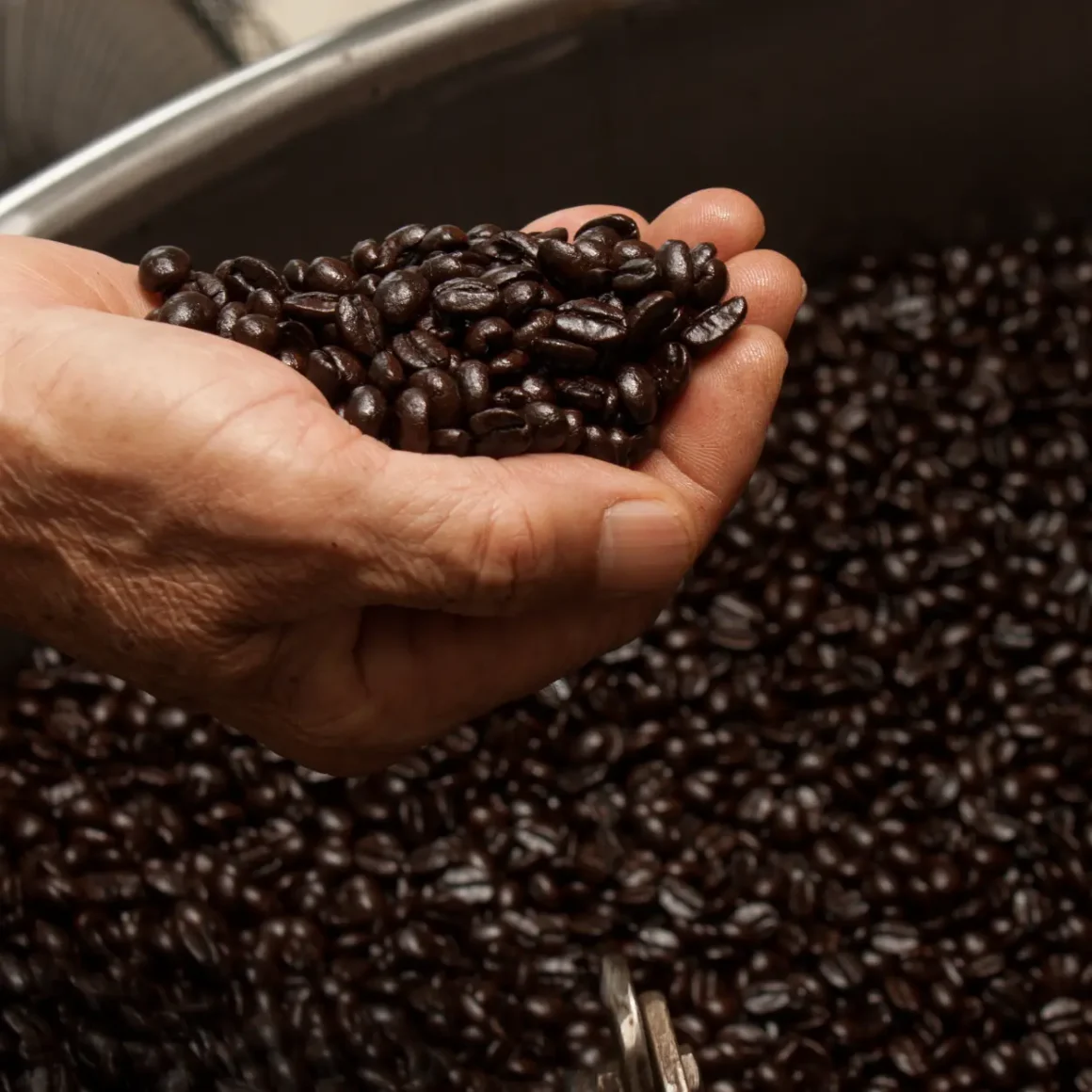
The art of roasting is paramount to the espresso experience. While many beans undergo roasting, the method applied to espresso beans is distinct and methodical.
- Roasting Depth: Espresso beans are recognized for their deep roast, which facilitates a more potent, enriched, and concentrated flavor.
- Heat Application: These beans are traditionally exposed to prolonged periods of high temperatures. This not only darkens the beans but also augments the release of oils, further intensifying the flavor.
- Customization: Although this typical type of bean undergoes a very dark roast, some brands do cater to those with a penchant for lighter roasts, emphasizing that the roasting spectrum for espresso is more diverse than often perceived.
To sum it up, the roasting process is instrumental in sculpting the definitive essence of the brew.
Popular Espresso Bean Varieties
Espresso’s global appeal has led to a range of bean varieties tailored for it. Understanding these can ensure one picks the best coffee suited for their espresso escapades.
- Arabica (Coffea arabica var. arabica): This is the frontrunner in the espresso world. Predominantly used, Arabica beans are favored for their refined taste and aromatic appeal.
- Robusta (Coffea arabica var. robusta): While historically viewed as Arabica’s less glamorous cousin, Robusta beans have carved a niche in the espresso domain. Their appeal lies in their ability to produce an exquisite crema and their enhanced caffeine content. Moreover, when deeply roasted, the perceptible quality differences between Arabica and Robusta diminish.
- Roast Preferences: It’s worth noting that while dark roasts are standard for espresso, individual preferences can veer towards lighter roasts, proving that this drink’s realm is as varied as the palate of its enthusiasts.
Conclusively, the variety of espresso beans on offer ensures that every aficionado of this lovely drink, from novices to connoisseurs, finds their perfect brew.
Espresso Beans vs Coffee Beans: Taste and Aroma
When diving into the world of this delicacy, the debate surrounding espresso vs coffee beans often arises. At the very heart of this discussion is the difference in taste and aroma between the two. Though they come from the same origin, the distinctions in roasting, grinding, and brewing processes contribute to their unique flavor profiles and scents.
How Espresso Bean Taste Differs
Espresso, with its concentrated preparation method, showcases a bold taste profile. Diving into the nuances of its flavor:
- Depth and Richness: This lovely beverage is characterized by its strong, rich, and robust taste, a result of the finely ground beans and high-pressure extraction process.
- Acidity Level: The flavor leans towards being less acidic, giving it a smoother finish. This subdued-acidic nature can be attributed to the deeper roast that espresso beans typically undergo.
- Mouthfeel: This drink presents a dense sensation in the mouth, almost velvety in its texture. This is due to the pressurized brewing method that extracts the oils and flavors from the beans more intensely.
In a nutshell, when comparing coffee beans vs espresso beans in terms of taste, espresso offers a more intense and full-bodied experience, enveloping the palate with its richness.
Flavor Profiles of Coffee Beans
A regular cup of joe, in contrast to its espresso counterpart, provides a different sensory experience. Delving into its flavor highlights:
- Natural Sweetness: Coffee often has a lighter taste, with an inherent sweetness that lingers.
- Acidity Range: Depending on the roast, this cup of joe can exhibit varying levels of acidity. This tangy flavor can be refreshing and is more pronounced in lighter coffee roasts.
- Bitterness Factor: Bitterness is an integral part of this beverage’s taste profile. However, in a well-brewed cup, this bitterness complements the other flavors rather than overpowering them.
To wrap up the taste comparison, a standard cup of this delightful drink provides a more balanced flavor profile, blending sweetness, acidity, and a touch of bitterness harmoniously.
Aroma Comparison: Espresso vs Coffee
The aroma is a vital component of this beverage-drinking experience. Comparing the scents of espresso and coffee:
- Espresso Aroma: This drink releases a potent and robust aroma, reminiscent of dark chocolate or toasted nuts. This strong scent is a prelude to its intense flavor profile.
- Coffee Aroma: Coffee, depending on its roast and origin, can have a multitude of aromas. From floral and fruity in lighter roasts to caramel and nutty in medium roasts, the range is vast.
In essence, while espresso offers a consistent and powerful aroma, regular coffee provides a tapestry of scents, each telling a story of its origin and roast.
Espresso Beans vs Coffee Beans: Brewing Methods
In the universe of caffeinated beverages, the brewing method stands as a pivotal factor in shaping the flavors and strengths of the resulting drink. When delving into the espresso bean vs coffee bean conundrum, it becomes imperative to understand the distinct preparation techniques each requires. From the pressure exerted to the granularity of the grind, the contrasts are as evident as they are intriguing.
Espresso Brewing Techniques

Espresso, synonymous with a rich, intense shot, follows a meticulous brewing method. The entire essence of it revolves around:
- Pressure Application: A definitive characteristic of this beverage is the application of high pressure during brewing. (3) This pushes hot water swiftly through the finely ground beans, extracting flavors and oils comprehensively.
- Fine Grind: The espresso beans, after undergoing an extended roasting process, are ground to a fine consistency. This fine grind is indispensable for the swift and efficient extraction that this drink demands.
- Quick Brewing Time: Contrary to many brewing methods that take minutes, espresso brewing is often a matter of mere seconds, owing to the elevated pressure and fine grounds.
The techniques associated with espresso brewing coalesce to yield a shot of coffee that’s dense, robust, and brimming with flavor, making it an embodiment of caffeinated potency.
Coffee Brewing Techniques
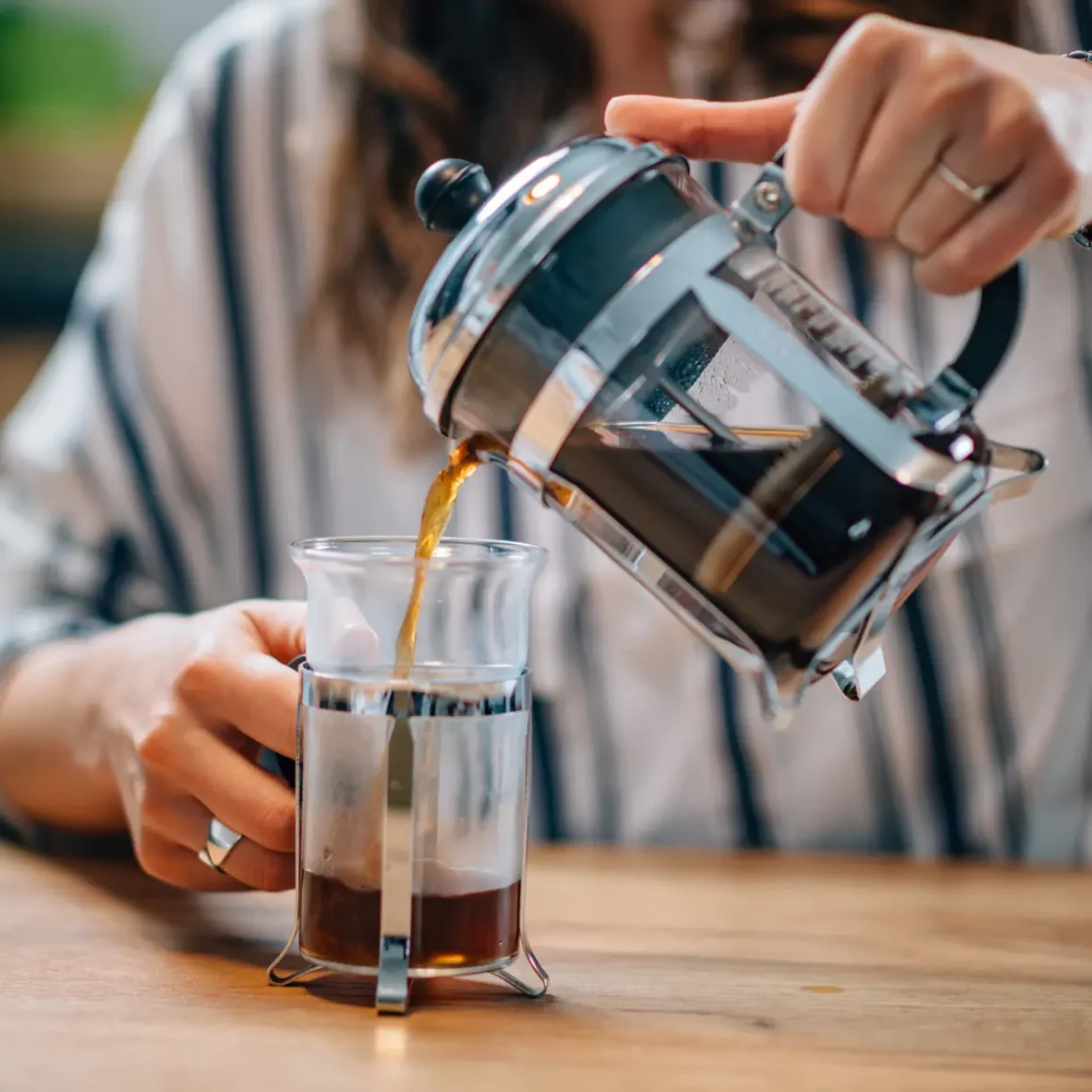
The traditional brewing of a cup of joe, in stark contrast to espresso, encompasses a spectrum of methods, each with its unique set of parameters. This versatility in methods includes:
- Drip System: This common method involves pouring hot water over coarser grounds, allowing it to slowly filter through, extracting flavors over time. This results in a milder, aromatic cup.
- French Press: Grounds of a coarser texture are soaked in hot water for several minutes in a French press coffee maker. Then, a manual plunger is used to separate the grounds from the liquid, creating a rich and full-bodied cup of joe.
- Percolation: In a coffee percolator, water is cycled through coarse grounds using gravity or a manual process, drawing flavors gradually.
Each traditional brewing technique offers a unique flavor profile, ensuring that every coffee enthusiast can find a method tailored to their palate’s preferences.
Espresso Machines vs Coffee Makers
The machinery behind brewing is as crucial as the beans and methods themselves. When discussing espresso and regular coffee:
- Espresso Machines: These are specialized devices that generate the high pressure necessary for espresso extraction. They are crafted to handle the fine grind of espresso beans and ensure that the water swiftly, yet thoroughly, interacts with the coffee.
- Coffee Makers: From basic French presses to sophisticated automated drip devices, there’s a wide range of versatility in brewing options. They cater to the coarser grind of regular coffee beans, allowing for prolonged extraction, which in turn produces the aromatic and gentler cup of joe that many are familiar with.
Whether drawn towards the technical precision of an espresso machine or the varied adaptability of traditional coffee makers, the right device can elevate the coffee bean vs espresso bean experience, ensuring that every cup is brewed to perfection.
Espresso vs Coffee: Which Is Right for You?
Navigating the world of coffee can be intriguing, especially when it comes to distinguishing between both of these beans. As we look into caffeine content, taste, and flavor profile, and who each type is best suited for, you’ll find that the choice can significantly affect your experience. Let’s delve deep into the espresso vs coffee debate.
Caffeine Content
The buzz you get from your cup often hinges on caffeine concentration:
- Espresso Beans: Contrary to what many believe, espresso, while richer in caffeine per ounce due to its concentration, often has comparable or even lesser total caffeine than a standard coffee cup, given its smaller serving size.
- Coffee Beans: With their larger serving size, a regular cup of joe might end up providing a similar or greater overall caffeine punch, even though its concentration per ounce is lower than espresso.
Taste and Flavor Profile

Every sip of coffee offers a unique symphony of flavors, influenced significantly by the type of bean and its roast.
- Espresso Beans: Dark roasted for a full-bodied, intense taste, espresso is known for its robust character. Subtle undertones, be it chocolate or fruity, can accentuate its depth.
- Coffee Beans: A regular cup of joe provides a more nuanced, balanced taste, which can range from the sharpness of fruits to the earthiness of nuts, depending on its roast and origin. The brewing technique also adds its flair.
Making the Ultimate Decision
When it comes to choosing between espresso and coffee, it’s more than just picking a side in the espresso vs coffee debate:
Best Suited For
Coffee choices often mirror our daily habits and the experiences we’re drawn to. For aficionados who yearn for potent, bold shots or have an affinity for milk-infused beverages like lattes, espresso beans are the go-to, ensuring a dominant flavor even when combined with other ingredients. On the other hand, if you’re inclined towards unhurried sips, savoring a spectrum of flavors, then regular coffee beans are tailored for a more extended and immersive journey.
Caffeine Sensitivity
It’s crucial to understand and acknowledge your body’s sensitivity to caffeine. Espresso, being a concentrated form of coffee, packs a significant punch of caffeine in a small serving. However, it’s worth noting that when you compare the overall content in a typical serving, a full cup of regular coffee could potentially contain more caffeine than a shot of espresso. This distinction is especially important for individuals who might be affected by higher doses of caffeine, as it can influence sleep patterns, energy levels, and overall mood.
Preparation Method
The way you prepare your cup of joe plays a pivotal role in determining the taste, aroma, and overall experience of your brew. If you’re considering acquiring an espresso machine, it’s essential to understand that such devices are often more intricate, both in terms of functionality and the brewing process. On the other hand, if you find solace in the simplicity and familiarity of traditional coffee makers, they offer a more straightforward approach to brewing. The convenience and ease of use, combined with the broader range of coffee it produces, can be quite appealing to many.
Overall, the distinction between both beans goes beyond just name and appearance. By understanding their unique caffeine contents, flavor profiles, and ideal usages, you can make an informed decision tailored to your personal preferences and needs.
Conclusion
In the grand tapestry of espresso beans vs coffee beans, understanding their distinct roasting techniques, brewing methods, and tasting profiles enriches our appreciation for these caffeinated delights. Both share a common origin but embark on diverse journeys that influence their final characteristics. Espresso beans, with their extended roasting and intense flavors, offer a concentrated and bold experience, while coffee beans present a spectrum of flavors across various roasts and brews.
As we’ve explored throughout this article, the subtleties and overarching differences are shaped by numerous factors, each adding layers of complexity to our daily brew. Ultimately, whether you’re drawn to the robust allure of espresso or the varied nuances of coffee, recognizing their differences further heightens the pleasure of every sip. So, the next time you indulge in a cup, remember the art, science, and passion behind the choice of beans and the journey they’ve undergone to reach your cup.
FAQ
How does the brewing method affect the flavor profile of espresso and coffee?
The brewing method determines extraction time and pressure, which directly influence the strength, aroma, and flavor nuances of the beverage.
What are the nutritional differences between espresso and coffee beans?
Nutritionally, both beans are similar; however, the brewing process and serving size can affect caffeine content and antioxidant levels in the final drink.
How do the origins of espresso and coffee beans influence their taste?
Bean origin determines its unique flavor notes, such as fruity, nutty, or chocolaty, influenced by the region's soil, altitude, and climate.
Can you use coffee beans to make espresso and vice versa?
Yes, you can use both interchangeably, but the roast level and grind size should be adjusted to suit the brewing method for optimal flavor.







